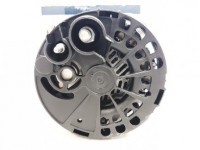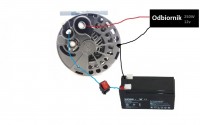Hello!
I have some fears to unravel.
I have such an alternator, most likely Marelli 63377002
The back has two outputs, probably D + and B +
Well, I have such a question for more experienced people, whether by directly connecting to a current receiver after accelerating this alternator will the current flow on the receiver?
I know that there is a 5W bulb between D + and B +, but then people have an alternator connected to the battery.
There are self-excited alternators of the 9 LEDs, but as it protrudes from this second screw to connect it probably will not be my alternator? (comes from cars ~ 2004). So far I have no way to check it out, I will be able to do it after the weekend. Possibly, I would ask for some ideas on how to get electricity from it to the receiver, what to raise it. Thank you in advance for your help!!
I have some fears to unravel.
I have such an alternator, most likely Marelli 63377002
The back has two outputs, probably D + and B +
Well, I have such a question for more experienced people, whether by directly connecting to a current receiver after accelerating this alternator will the current flow on the receiver?
I know that there is a 5W bulb between D + and B +, but then people have an alternator connected to the battery.
There are self-excited alternators of the 9 LEDs, but as it protrudes from this second screw to connect it probably will not be my alternator? (comes from cars ~ 2004). So far I have no way to check it out, I will be able to do it after the weekend. Possibly, I would ask for some ideas on how to get electricity from it to the receiver, what to raise it. Thank you in advance for your help!!




